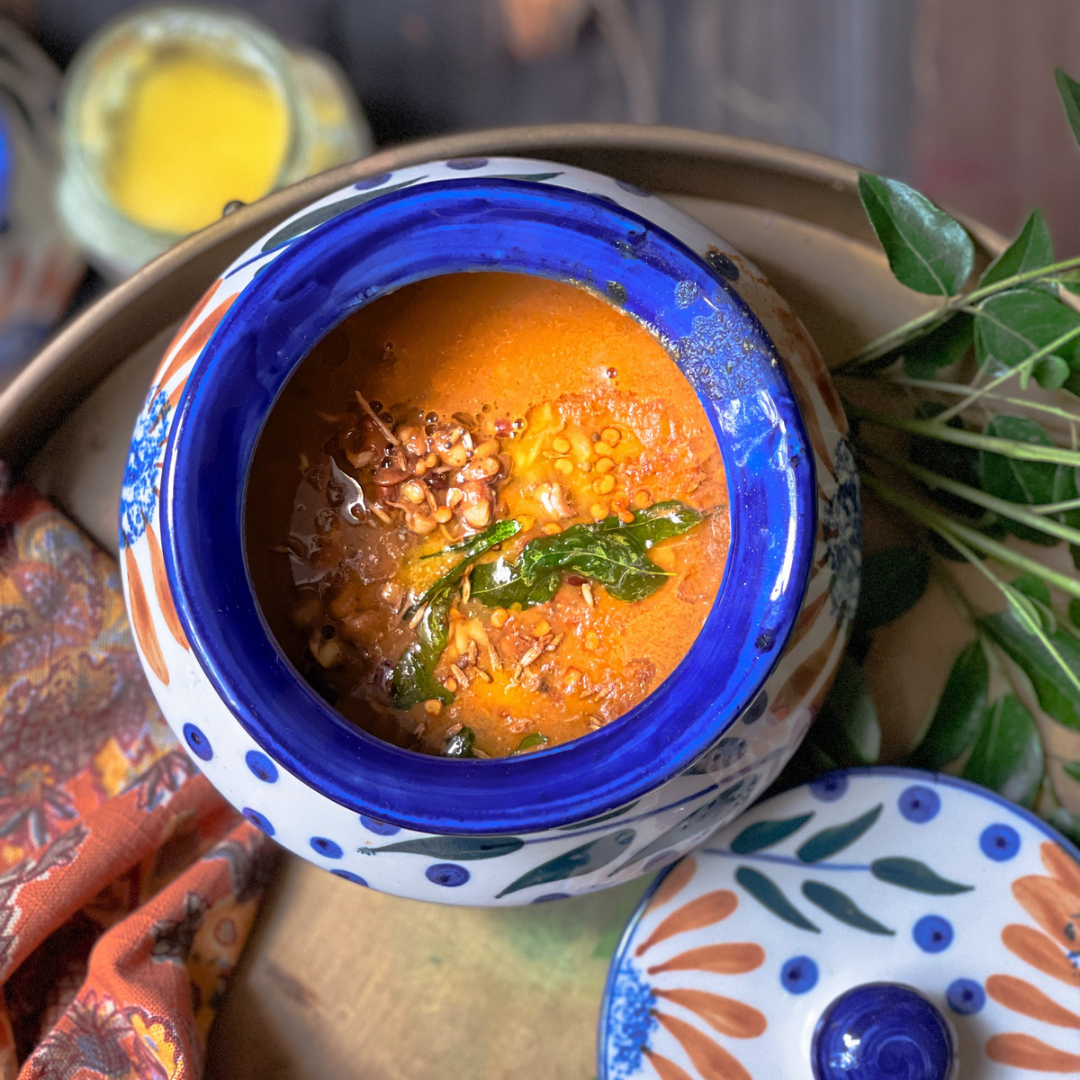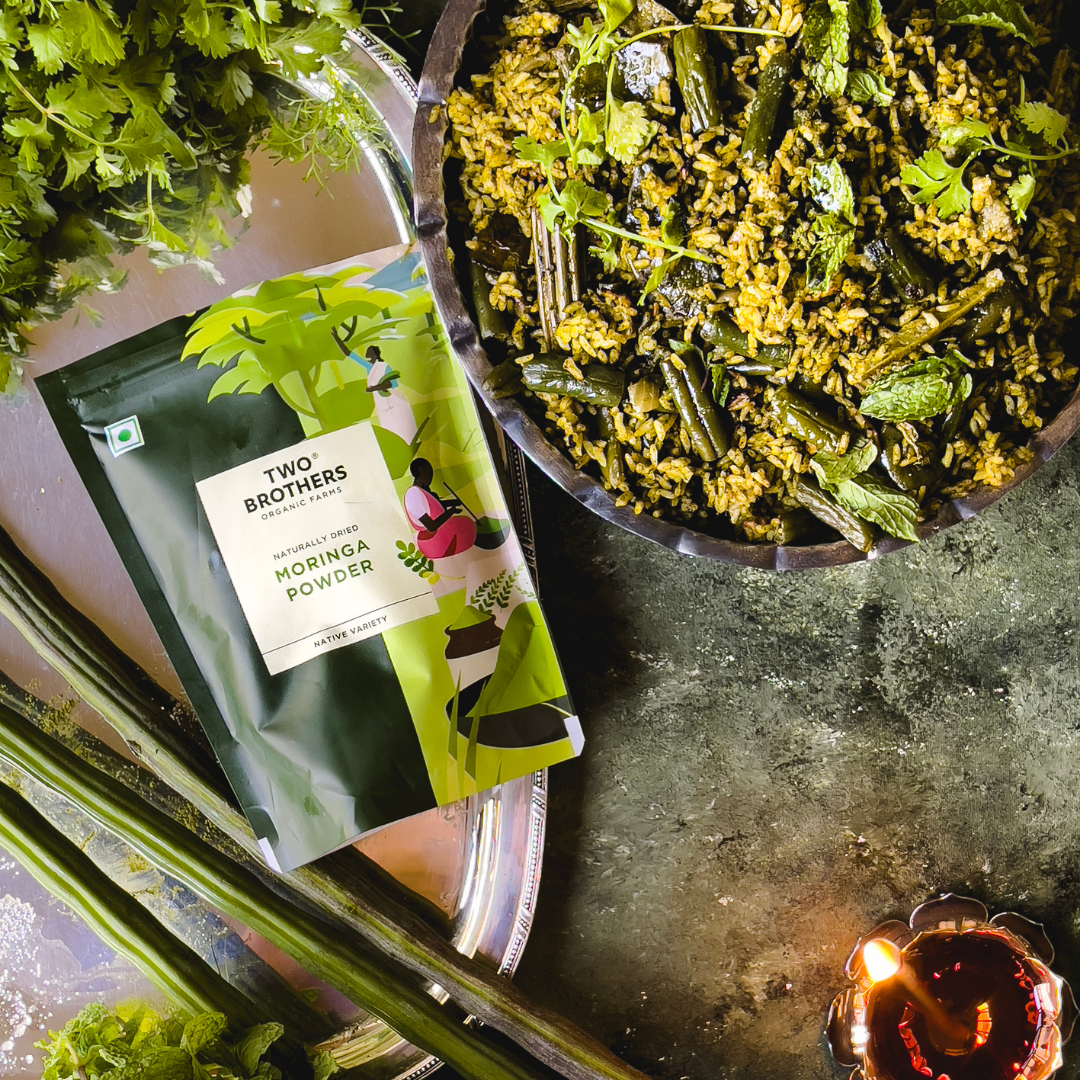This year we bring you a special series #NavaratriWithTBOF - one that is festive and colourful and a 'Culinary Celebration' of the colours of these 9 days of Navaratri! We will bring you ONE DELICIOUS RECIPE every day for these 9 days that will be all about the festive colour for that day.
In India we celebrate 9 forms of the Divine Mother through these 9 days and each day is assigned a colour each year.
#NavaratriWithTBOF - Day 3 Colour - Grey
Chandraghanta - This is the third incarnation of the Goddess who wears a grey crescent shaped half moon on her forehead; she is ever ready to take on the demons and is also seen in her married form. She symbolizes courage and bravery. She is the destroyer of suffering and illness.
The Grey colour is assigned for the third day of Navaratri this year which represents vitality, strength and transformation.
The recipe that we present today heroes an ingredient that goes severely unnoticed in most kitchens - very very commonly used but rarely noticed! The tiny mustard seed is an ingredient which is always the quiet hero in our Indian kitchens. It stays behind the scenes while still providing a unique profile of nutrients. This recipe is extremely easy to make and can be eaten on the side with rice or with dosa, paratha, uthappam, idli etc

Rai Ki Chutney is all about the sweetness of fresh coconut blending with the sharpness of mustard seeds to give a well balanced and tasty flavour to the chutney. Black peppercorns add to the monotone shades of black and white as well as elevate the sharpness in taste.
Written by Shanthini Rajkumar
When ebony and ivory make colours of ash, the dish may lack in colour but certainly not in taste. Foods which are eaten during the end of the calendar year are ones which have a bold mix of pungent flavours and varied textures. The natural oils present in ingredients like mustard seeds, coconut, black peppercorns etc work towards naturally keeping the body warm during the rainy season.
The tiny mustard seed is an ingredient which is always the quiet hero in our Indian kitchens. It stays behind the scenes while still providing a unique profile of nutrients which are vital for a good immune system. This recipe is easy to make and can be eaten with rice or any South Indian staple dish like uthappam, idli etc
The sweetness of fresh coconut mixes with the sharpness of mustard seeds and gives a well balanced and tasty flavour to the chutney. Black peppercorns add to the monotone shades of black and white as well as elevates the sharpness felt on the tongue while eating this condiment.

Recipe for a mustard seed chutney-serves 4
- Mustard seeds - 1 tsp
- Fresh coconut -1 C grated
- Black urad dal -1 tsp
- Small onions - a handful (pounded coarsely)
- Black peppercorns -1 Tbsp
- Tamarind - 1 small piece
- Garlic cloves - 6-8
- Coconut oil/ Gingelly oil - 1 1/2 Tbsp
- Salt to taste
Method to Make Rai Ki Chutney
- Heat oil in a deep kadai (wok)
- Add the mustard seeds and let it pop
- Add the urad dal and peppercorns and saute
- Add the tamarind, garlic and small onions and saute until the onions are soft and transparent and garlic is soft.
- Add the grated coconut and keep tossing until it turns colour lightly (not golden) and becomes dry.
- Turn off the heat and allow the mixture to cool.
- Grind by hand in a stone grinder, adding a little water at a time or in a mixer jar.
- While grinding add very little water at a time and grind to a thick chunky consistency.










